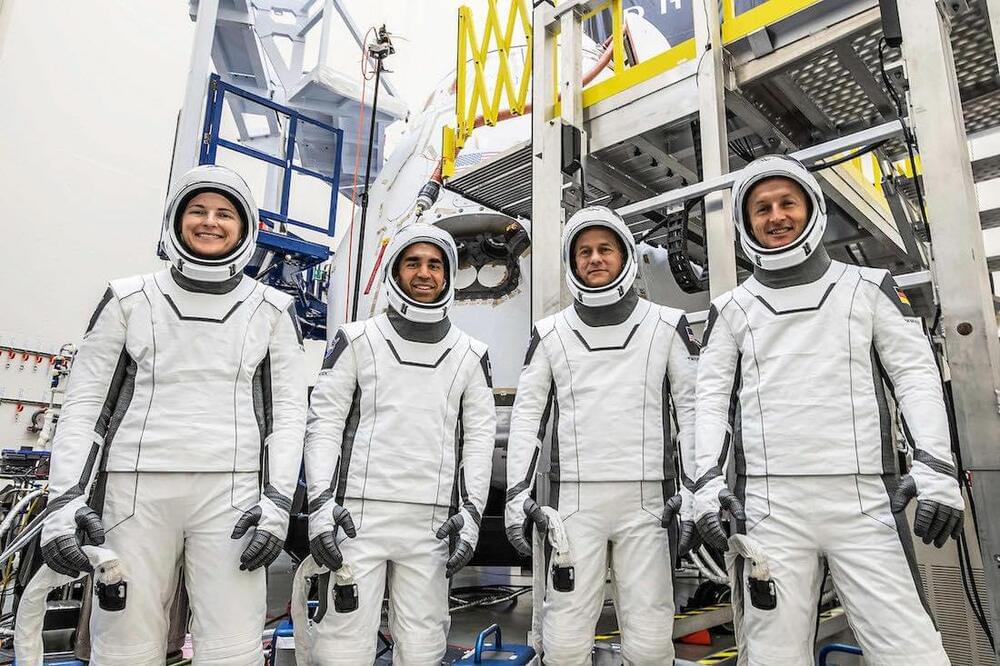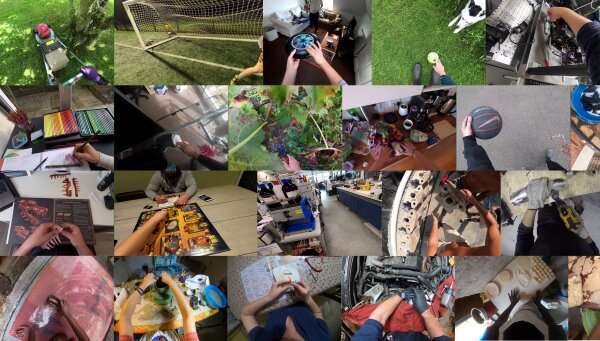A white dwarf star that spins every 25 seconds owes its record-breaking rotation rate to a companion star dumping gas onto it.


Analog Mars mission to carry out experiments testing methodologies and equipment for real-life travel to the Red Planet.

The four astronauts set to blast off Oct. 30 to the International Space Station visited Cape Canaveral over the weekend for a test run inside SpaceX’s new Crew Dragon Endurance spacecraft, one of the last training events before they return to Florida on launch week.
Commander Raja Chari, a U.S. Air Force colonel, leads NASA’s Crew-3 mission to the International Space Station. Chari and the mission’s other three astronauts visited Cape Canaveral Space Force Station Saturday for the Crew Equipment Interface Test, a customary pre-flight training event officials equate to a “test drive” or “walk through” of the spacecraft.
The four-person crew will launch on the third NASA crew rotation flight to the space station, and the fifth human flight on a Crew Dragon spacecraft overall, including a 2020 test flight and the all-civilian Inspiration4 mission last month.

When asked about his thoughts on young people starting out in the crypto space, whether it be with digital coins or other assets like nonfungible tokens (NFTs), Dell says that “if I was a teenager right now, I’d probably be all over that.”
In fact, he’s personally invested in a few blockchain enabling technologies, the 56-year-old tells CNBC Make It. “I think it’s super interesting. There’s still a lot to be worked out in terms of what the investment looks like, and what type of investment it is for everyone, but I think it’s interesting.”
That goes for his company as well. “We’re helping a lot of customers implement blockchain at sort of the enterprise level,” Dell says.
https://youtu.be/Z4SXarl6i1k The James Webb Space Telescope will be the largest, most powerful telescope ever launched into space. Webb’s flight into orbit will take place on an Ariane 5 rocket from Europe’s Spaceport in French Guiana. Webb is the next great space science observatory, designed to answer outstanding questions about the Universe and to make breakthrough discoveries in all fields of astronomy. Webb will see farther into our origins – from the formation of stars and planets, to the birth of the first galaxies in the early Universe.

A New Zealand city seems to have left itself vulnerable to a revenge hex.
The city council of Christchurch announced that it will stop paying its official wizard $16,000 ($10,400 USD) a year in December, New Zealand news site Stuff reported.
Ian Brackenbury Channell (aka the Wizard) has been serving as the city’s appointed necromancer since the olden days of 1998. Over the past few decades he has made a total of $368,000 (roughly $258,825 USD) “to provide acts of wizardry and other wizard-like-services — as part of promotional work for the city of Christchurch.”

I’m confused. At 34:20 he says he says people in clinical trials had there age reversed 2 years (I assume he is talking about thymus rejuvenation) and it is additive so people who had it 4 times went back 8 years. Ok. AND?! I mean am I missing something here? Is this not what we are after? I’m 50 now, so if I did it 13 times will I be 24 again?
My guest today is a revolutionary thinker and ground-breaking scientist who’s on a mission to make you younger. He’s Australian biologist and Harvard professor David Sinclair, author of Lifespan: Why We Age – And Why We Don’t Have To. David is one of the world’s leading scientific authorities on longevity, ageing and how to slow its effects.
#feelbetterlivemore.
–
Connect with David:
Instagram https://www.instagram.com/davidsinclairphd.
Facebook https://www.facebook.com/davidsinclairphd/
Twitter https://twitter.com/davidasinclair.
Website https://www.doctorsinclair.com.
About David https://sinclair.hms.harvard.edu/people/david-sinclair.
David’s book:
Circa 2018 #fuckcancer #zap #it #laser #cancerfree
A pioneering two-in-one lung cancer treatment is being used to both diagnose and destroy hard-to-reach tumours in just half an hour – allowing thousands of NHS patients to avoid the need for invasive, life-changing surgery.
Doctors zap the tumour with a hot needle – a treatment called radiofrequency ablation – and at the same time carry out a biopsy, where a tiny piece of the cancer is removed for testing to see whether it is aggressive and likely to have spread.
Most lung-cancer patients currently undergo repeat procedures to have a tiny piece of the tumour cut out for examination (a biopsy), followed by radiotherapy or more surgery to remove the cancerous tissue.

The University of Bristol is part of an international consortium of 13 universities in partnership with Facebook AI, that collaborated to advance egocentric perception. As a result of this initiative, we have built the world’s largest egocentric dataset using off-the-shelf, head-mounted cameras.
Progress in the fields of artificial intelligence (AI) and augmented reality (AR) requires learning from the same data humans process to perceive the world. Our eyes allow us to explore places, understand people, manipulate objects and enjoy activities—from the mundane act of opening a door to the exciting interaction of a game of football with friends.
Egocentric 4D Live Perception (Ego4D) is a massive-scale dataset that compiles 3,025 hours of footage from the wearable cameras of 855 participants in nine countries: UK, India, Japan, Singapore, KSA, Colombia, Rwanda, Italy, and the US. The data captures a wide range of activities from the ‘egocentric’ perspective—that is from the viewpoint of the person carrying out the activity. The University of Bristol is the only UK representative in this diverse and international effort, collecting 270 hours from 82 participants who captured footage of their chosen activities of daily living—such as practicing a musical instrument, gardening, grooming their pet, or assembling furniture.
“In the not-too-distant future you could be wearing smart AR glasses that guide you through a recipe or how to fix your bike—they could even remind you where you left your keys,” said Principal Investigator at the University of Bristol and Professor of Computer Vision, Dima Damen.